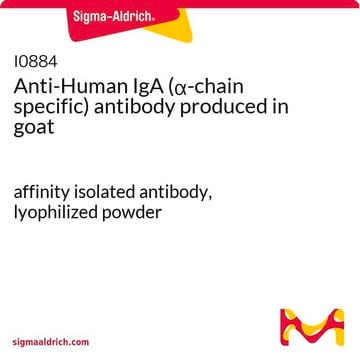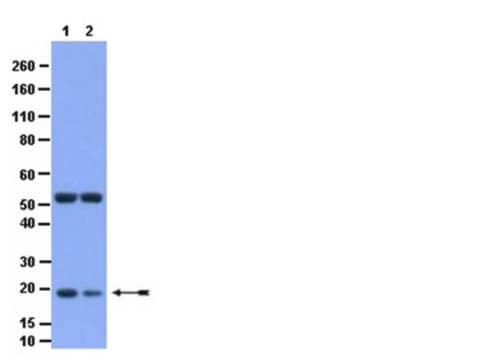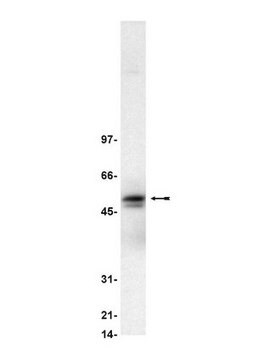Recommended Products
biological source
rabbit
Quality Level
antibody form
serum
antibody product type
primary antibodies
clone
polyclonal
species reactivity
rat, mouse, human
technique(s)
ELISA: suitable
immunohistochemistry: suitable (paraffin)
immunoprecipitation (IP): suitable
western blot: suitable
isotype
IgG
NCBI accession no.
UniProt accession no.
shipped in
dry ice
target post-translational modification
unmodified
Gene Information
human ... NFKBIA(4792)
General description
Specificity
Immunogen
Application
Anti-IкBα staining on invasive ductal carcinoma tissue (Breast Cancer) was pretreated with citrate buffer, pH 6.0. A 1:1,000 diluted was used using IHC-Select detection with HRP-DAB.
ELISA: Recommended
Immunoprecipitation: Recommended
Optimal dilutions must be determined by the end user.
Epigenetics & Nuclear Function
Transcription Factors
Quality
Western Blot Analysis:
1:500 to 1:2,000 dilution of this lot detected IkBalpha on 10 μg of HEK293 lysates.
Target description
Linkage
Physical form
Storage and Stability
Handling Recommendations: Upon first thaw, and prior to removing the cap, centrifuge the vial and gently mix the solution. Aliquot into microcentrifuge tubes and store at -20°C. Avoid repeated freeze/thaw cycles, which may damage IgG and affect product performance.
Analysis Note
HEK293 cell lysate.
Control Peptide: Included with the antibody is 50 μg (1 mg/mL) of IκBα control peptide. The peptide will block the specific interaction of AB3016 with the IκBα subunit. Control peptide should be used at 1.0 μg per 1.0 μL of antiserum used in assay. Optimal concentrations must be determined by the end user.
Disclaimer
Not finding the right product?
Try our Product Selector Tool.
recommended
Storage Class Code
12 - Non Combustible Liquids
WGK
WGK 2
Flash Point(F)
Not applicable
Flash Point(C)
Not applicable
Certificates of Analysis (COA)
Search for Certificates of Analysis (COA) by entering the products Lot/Batch Number. Lot and Batch Numbers can be found on a product’s label following the words ‘Lot’ or ‘Batch’.
Already Own This Product?
Find documentation for the products that you have recently purchased in the Document Library.
Our team of scientists has experience in all areas of research including Life Science, Material Science, Chemical Synthesis, Chromatography, Analytical and many others.
Contact Technical Service








